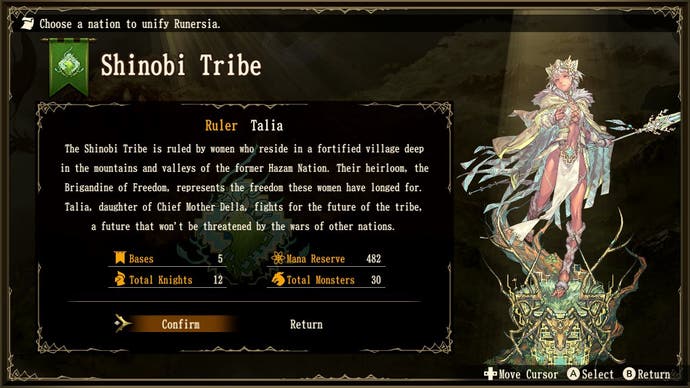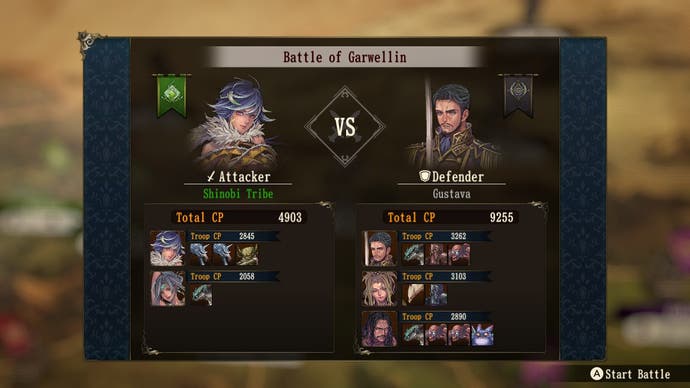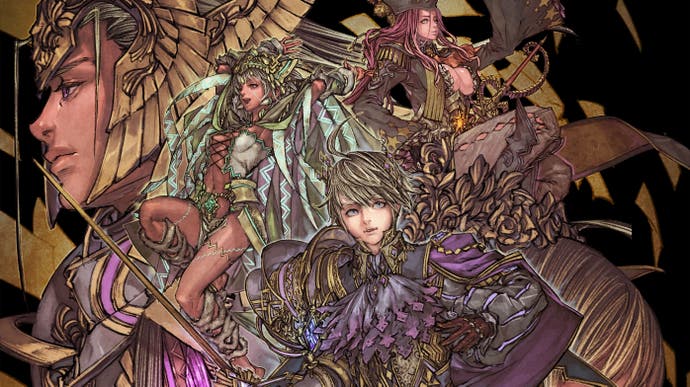Brigandine is a rare gem in the chaos of the Switch's eShop
Risk assessment.
I'd sort of given up on unearthing anything undiscovered and half-decent on the Switch's eShop a while ago. Once upon a time something like Golf Story would pop up and reward a punt - nowadays the calamitously cluttered store is, to put not too fine a point on it, a sea of shite. There's shovelware and asset flips and a visual novel with a host of dopey looking Shiba Inu in fancy dress and gallivanting around a Japanese city. Okay, that last one does look kind of awesome and I really should get round to playing it one day soon.
Anyway, I digress. What I mean to say is that Brigandine is one of those exceptions - a rare gem, even if it is something of a rough diamond. It's a revival of a tactical role-playing series that last saw life at the turn of the century courtesy of original developer Hearty Robin, and if you've any recollection of the originals you've better knowledge of PS1 deep cuts than me. A little research suggests that Brigandine: The Legend of Forsena wasn't a widely loved thing upon its original release, receiving something of a critical panning, but it's lived on long after in the hearts of its dedicated fans.

Playing Brigandine: The Legend of Runersia, the Switch-exclusive sequel that doesn't do too much by way of tinkering with the original's mechanics, it's possible to see both sides of the argument. This is a tactical role-player that's ponderous and arcane, and it can take more than a little while to build up a head of steam. It's probably best to think of it like a digital board game - you pick one of six sides, each with their own backstory, strengths and weaknesses, and then work about gaining control of a map. It's about putting your pieces in position in the first organisational phase, then getting down to the action - actually, given the pacing, action might be over-egging it a bit - as you clear out encampments in turn-based battles.
There's neat detail there - the organisation phase is the most engaging, certainly, as you work with flexible character classes and sort through mobs of monsters that accompany you into battle, picking up quests or tending to diplomatic tasks. The number of monsters available to you, and the density of the systems, can be quite off-putting at first, and the battles themselves aren't exactly dynamic. If you're coming into this off the back of something as streamlined and silky in the hands as Fire Emblem: Three Houses then it can be quite a shock how stately it all is.
But that stately pace is something Brigandine leans into, and it does so very well. There's something luxurious about it all, from the exquisite artwork of Raita Kazama (who previously worked on the original Xenoblade Chronicles) to the chewy lore provided by old school Final Fantasy veteran Kenji Terada. The lavishness of it all puts to mind the work of Yasumi Matsuno (while the rudimentary nature of the visuals in-battle reminds me of the master's Crimson Shroud, another rich RPG that felt like it was being played on a tabletop).

It's a sumptuous thing that I keep returning to, despite its faults. Brigandine does often feel like a relic, though that's not necessarily a bad thing; it's heavy with history, slightly dusty and at times unknowable. Getting to know it takes patience, and I'm not quite there yet but I'm happy to persevere - simply because spending time with a game like this is always a pleasure.


